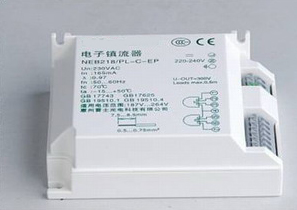European Parliament and Council Directive 2002/95/EC on the restriction of use of certain hazardous substances in electrical and electronic equipment (ROHS) Directive provides Member States with effect from July 1, 2006 is disabled in the electrical and electronic products (except limited to a small number of) cadmium, lead, mercury, PBB (polybrominated biphenyls) and PBDE (polybrominated biphenyls). In addition, it has issued a No. 2002/96/EC on Waste Electrical and Electronic Equipment (WEEE) Directive, this Executive Order on August 13, 2005 execution. Lighting appliances in the WEEE directive Annex 1A provides end-of-life lighting and electronic products recycling rate to more than 70% of the average weight per appliance for gas discharge lamps, components, materials, and material recycling utilization will reach the light more than 80% by weight.
China is now the world lighting appliances export superpower, the release of these two directives lighting electrical products exports to the EU have a very big impact on China. At present, China corresponding to the standards corresponding to the two EU directives forthcoming, these two commands will also in the future development of the electronic ballasts and magnetic ballast have a significant impact.
 Metal halide electronic ballast and magnetic ballast, to meet RoHS and WEEE Directive the degree of difficulty is very different. Magnetic ballasts as long as the materials used, such as flame retardants in plastic insulating material, excluding PBB (polybrominated biphenyls) and PBDE (polybrominated biphenyls), brass material does not contain lead, cadmium hexavalent chrome plating can easily meet the ROHS directive requirements. For magnetic ballasts, materials recovery and recycling of end-of-life utilization can easily reach more than 85% of its own weight, fully able to meet the requirements of the Weee directive.
Metal halide electronic ballast and magnetic ballast, to meet RoHS and WEEE Directive the degree of difficulty is very different. Magnetic ballasts as long as the materials used, such as flame retardants in plastic insulating material, excluding PBB (polybrominated biphenyls) and PBDE (polybrominated biphenyls), brass material does not contain lead, cadmium hexavalent chrome plating can easily meet the ROHS directive requirements. For magnetic ballasts, materials recovery and recycling of end-of-life utilization can easily reach more than 85% of its own weight, fully able to meet the requirements of the Weee directive.
Electronic ballasts to achieve the requirements of the ROHS Directive, in addition to the plastic insulator and brass also need to meet the above requirements, the most difficult is the lead content in the solder, as we all know, when tin-lead reached 65% than the column / 35% solder characteristics. This grade of our current electronic circuit board solder commonly used solder, but in order to meet the ROHS Directive, have to give up such a solder. The other to meet the ROHS directive solder In addition to the high cost of welding temperature significantly improved, which makes the process more difficult then, but also easier to damage electronic components. Electronic ballasts also face a lot of difficulties to achieve the WEEE directive requires recycling of electronic components and circuit boards is a very difficult problem, although the technology has enabled the recycling of electronic ballasts achieve Weee directive, however, recycling pay consideration than magnetic ballast much larger.
Metal Halide Ballasts | High Pressure Sodium Ballasts | Fluorescent ballasts | Gear Tray
Links: Porcelain lamp socket | Mercury Vapor Ballast | Light bulb socket
Xml Copyright: @2012-2020 James Lighting Electronic Co.,Ltd